Coverage of the Apollo 13 crisis continues!
TUNE IN!


by David Levinson
Skyjacked
Until recently, it seemed like there was at least one major airplane crash every month. That’s one of the reasons almost every airport has a place where you can buy short-term life insurance for your flight. But crashes seem to be giving way to a new risk: hijacking (or skyjacking as headlines writers would have it; the term will never stick). Last year alone, there were roughly 100 incidents around the world. That’s worse than crashes ever were.
In the U.S., the hijacker usually demands to be taken to Cuba. It’s mostly an inconvenience for the passengers, who get to their destination much later than planned and don’t even get to see any of Cuba. It’s become so common that it’s the subject of jokes and skits. But these incidents are taking on a more violent turn.
My colleague Cora recently reported on two failed hijacking attempts in Munich, one of which left one dead and ten injured. Not long after that, Swissair Flight 330 was destroyed by a bomb. Those three attacks have been attributed to a Palestinian terrorist organization. On March 1st, a bomb was found on board an Ethiopian Airlines flight before it left Rome. On the 17th, a gunman aboard an Eastern Airlines shuttle flight wounded the pilot and fatally wounded the co-pilot after being told the plane had to refuel in Boston. Fortunately, the co-pilot was able to wrest the gun away from the hijacker before succumbing to his wounds, allowing the pilot to land the plane safely. To date, this is the only airplane hijacking in America to end with a fatality.
On March 31st, a Japanese group calling themselves the Red Army Faction hijacked a flight from Tokyo to Fukuoka and demanded they be flown to Cuba. After being told the plane was incapable of flying that far, they demanded they be flown to North Korea instead. While refueling in Fukuoka, they released 23 passengers, mostly children and the elderly. An attempt was made to land the plane in South Korea and trick the hijackers into believing they’d reached Pyongyang. Unfortunately, they realized what was going on after the plane landed. Following some tense negotiations, the Japanese Vice Minister for Transportation, Shinjiro Yamamura, traded himself for the rest of the passengers and the plane flew on to North Korea. The hijackers were granted asylum and the plane and crew were allowed to return to Japan (not necessarily a given with North Korea) a few days later, arriving in Tokyo on the morning of April 5th.
That’s a lot in less than two months. But in the midst of all that, airplane hijackings and bombings also made it to the movies. March 5th saw the premiere of Airport. Depending on who you ask, it’s either a disaster or a hit; either way it’s star-studded. Take a look at the poster.
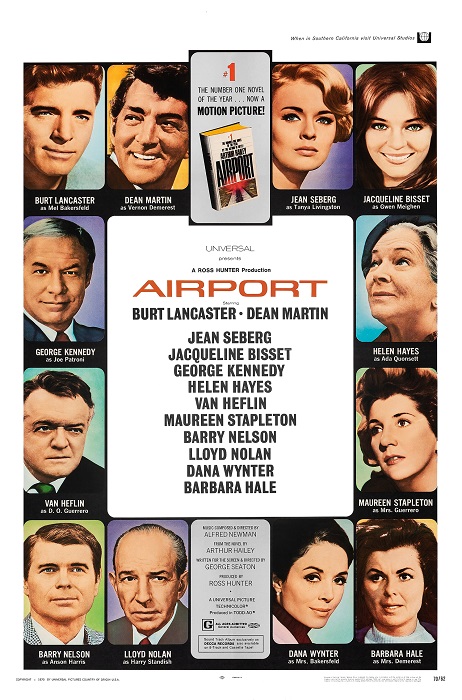 You probably know who most of these people are.
You probably know who most of these people are.
Based on the 1968 novel by Arthur Hailey, the film is about the operations of an airport crippled by a blizzard and dealing with a wrecked plane on the tarmac and an inbound flight with a suicide bomber aboard, plus lots of soap opera stuff. While critics almost universally panned the book, it spent 64 weeks on the New York Times best-seller list, 30 at #1, and was the biggest selling novel of 1968. The critics are no kinder to the film (“dull” seems to be one of the nicer things they say), but once it went to wider release, it promptly spent two weeks as number one at the box office and is still in the top five. There must be something in the water. Or the air.
Spacejacked
The hijacking theme continues in this month’s Venture, which is dominated by Edward Wellen’s new novel. It’s normal for Venture to give most of its space to a condensed novel, but it feels like more space than usual is taken up this time.
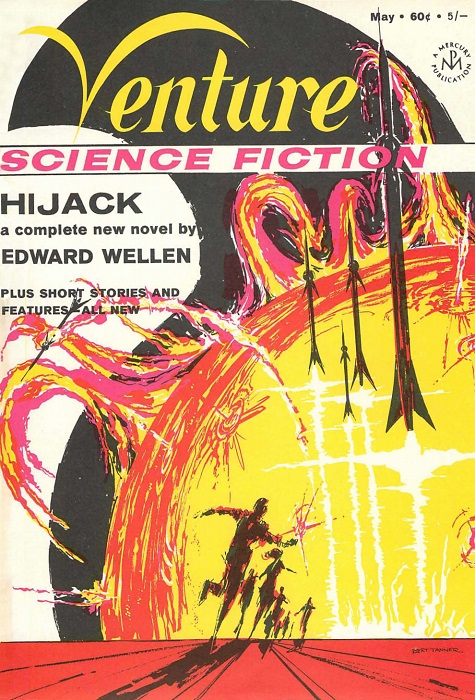 I’m still not sold on Tanner’s covers, but this one is better than most. Art by Bert Tanner
I’m still not sold on Tanner’s covers, but this one is better than most. Art by Bert Tanner
Continue reading [April 14, 1970] Take this spaceship to Alpha Centauri (May 1970 Venture) →



![[May 2, 1970] Gaudy Shadows in the Crystal Cave (May 1970 Galactoscope)](https://galacticjourney.org/wp-content/uploads/2025/05/700502covers-672x372.jpg)
![[April 30, 1970] Praise for the Resident Witch (May 1970 <i>Analog</i>)](https://galacticjourney.org/wp-content/uploads/2025/04/700430analogcover-672x372.jpg)


![[April 28, 1970] A Strange Case of Vulgarity & Violence (<i>Vision of Tomorrow</i> #8)](https://galacticjourney.org/wp-content/uploads/2025/04/VoT5-1-280x372.jpg)


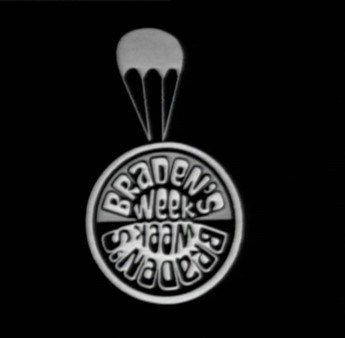

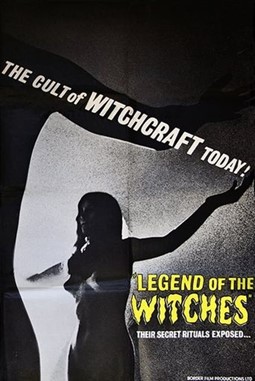
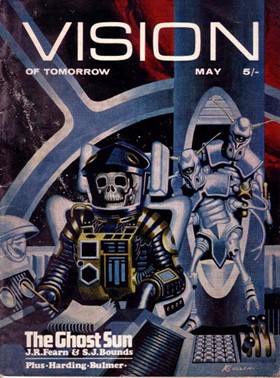
![[April 26, 1970] Red stars in space (Communist China and the USSR make leaps)](https://galacticjourney.org/wp-content/uploads/2025/04/700426dongfanghong1-672x372.jpg)

![[April 24, 1970] Save Our Ailing Planet (Earth Day: April 22)](https://galacticjourney.org/wp-content/uploads/2025/04/700424_3-EarthDayPoster-672x372.jpg)



![[April 22, 1970] “Houston, We’ve had a Problem Here!” (Apollo-13 emergency in space)](https://galacticjourney.org/wp-content/uploads/2025/04/Apollo-13-13-672x372.jpg)



![[April 20, 1970] Not the final quarry (May 1970 <i>Fantasy and Science Fiction</i>)](https://galacticjourney.org/wp-content/uploads/2025/04/700420fsfcover-653x372.jpg)

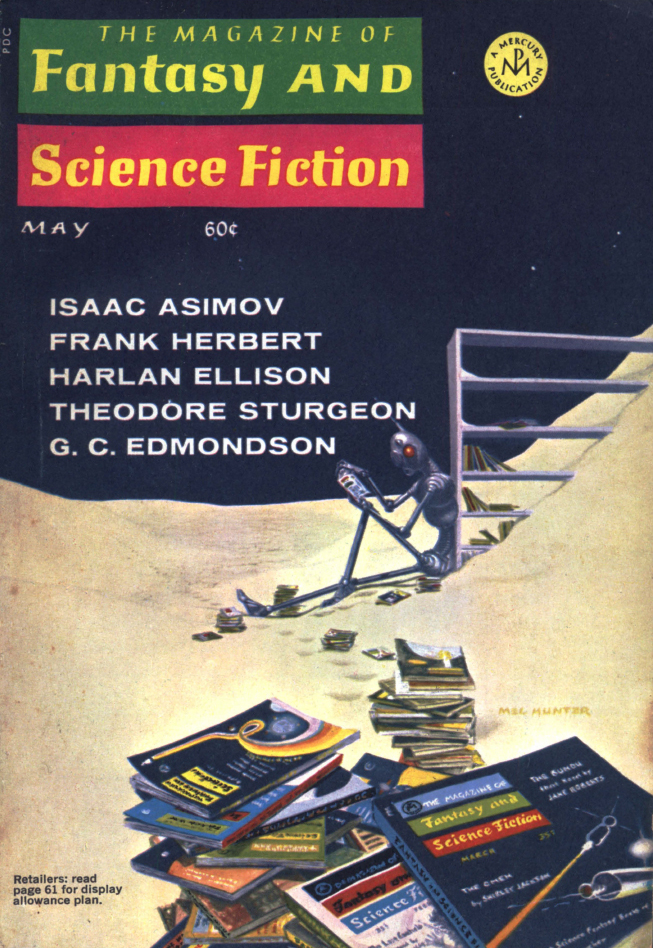
![[April 18th, 1970] The Spaceman Who Came In From The Cold (<i>Doctor Who</i>: The Ambassadors Of Death [Parts 1-4])](https://galacticjourney.org/wp-content/uploads/2025/04/700418naptime-672x372.jpg)

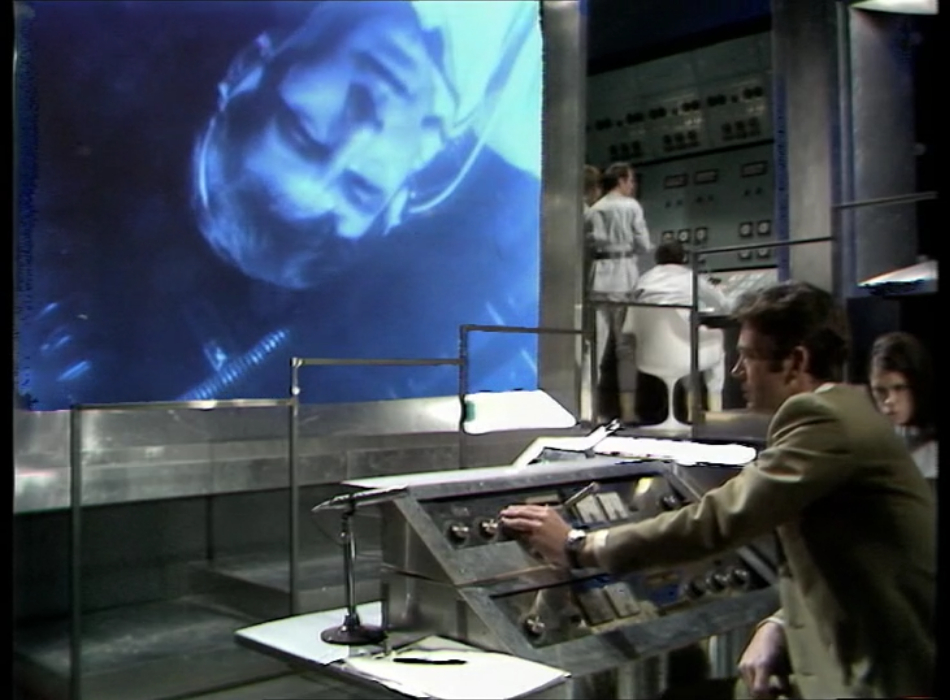
![[April 16, 1970] Junk Day for Ice Crowns (April 1970 Galactoscope)](https://galacticjourney.org/wp-content/uploads/2025/04/700420covers-672x372.jpg)



![[April 14, 1970] Take this spaceship to Alpha Centauri (May 1970 <i>Venture</i>)](https://galacticjourney.org/wp-content/uploads/2025/04/Venture-1970-05-Cover-475x372.jpg)

 You probably know who most of these people are.
You probably know who most of these people are. I’m still not sold on Tanner’s covers, but this one is better than most. Art by Bert Tanner
I’m still not sold on Tanner’s covers, but this one is better than most. Art by Bert Tanner